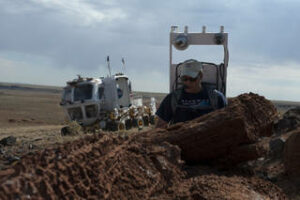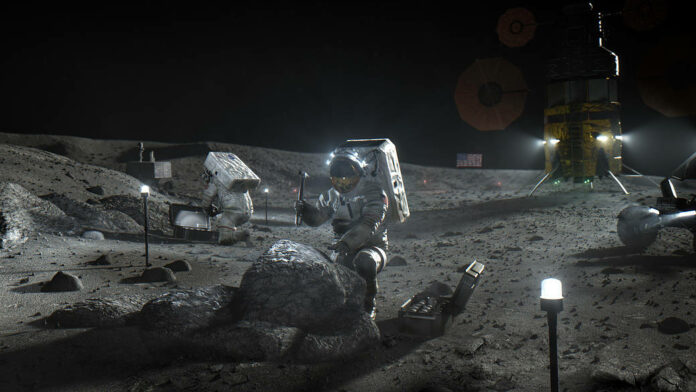HOUSTON, Texas — To prepare for the Artemis era of research on the moon, NASA is conducting field tests in Arizona over the next three weeks. Astronauts, engineers, and scientists are taking part to practice mission scenarios for Artemis astronauts in a simulated lunar surface environment.

The Arizona desert possesses many characteristics that are analogous to a lunar environment including challenging terrain, interesting geology, and minimal communications infrastructure, all of which astronauts will experience near the lunar South Pole during Artemis missions.
The two analog missions scheduled for this month – the Joint Extravehicular Activity and Human Surface Mobility Program Test Team (JETT) Field Test 3 and Desert Research and Technology Studies (D-RATS) – will provide crucial data and lessons learned as teams conduct operations in a simulated lunar environment to practice for the real event.
JETT3 will consist of four simulated moonwalks that follow operations planned for Artemis III, the first of the Artemis missions to land astronauts on the lunar surface. The primary focus is to help NASA gain an understanding of the requirements for the unique lighting conditions at the lunar South Pole region.
The mission is planned for today through Sunday near the SP Crater, about 40 miles north of Flagstaff, Ariz. To replicate the proper lighting conditions, the JETT3 simulated moonwalks will occur at night, and a simulated sun will produce lighting and shadows in the field.
Two NASA astronauts, Drew Feustel and Zena Cardman, will serve as the crewmembers for all four moonwalks and will traverse within an approximate one-mile circle. They will be wearing mockup spacesuit systems that simulate fully pressurized spacesuits. The astronauts will alsouse a variety of moonwalking tools and techniques to collect samples including raking, hammering, and coring.
D-RATS will practice operations for future missions beyond Artemis III and will consist of three mission runs scheduled for Oct. 11-22 at Black Point Lava Flow, near SP Crater. The mission will focus on pressurized rover operations, which is a key element of Artemis missions starting with Artemis VII in 2030.
Pressurized rovers are like RVs, housing astronauts for weeks at a time, complete with all the air, water, food, hygiene equipment, and tools they need on their trek across the lunar surface. Astronauts can live and work comfortably inside the rover, exiting the vehicle to collect samples or deploy experiments.
Japan Aerospace Exploration Agency (JAXA) will join NASA for D-RATS as part of a study agreement that supports JAXA’s ability to potentially provide a pressurized rover for Artemis.
JAXA astronauts Akihiko Hoshide and Norishige Kanai, and JAXA expert Naofumi Ikeda will join NASA astronauts Jessica Meir and Stan Love and NASA engineer Sarah Shull, in driving a pressurized rover over the course of three days. Crews of two will rotate through living and operating out of the pressurized rover, including conducting simulated moonwalks.
Throughout the mission, NASA and JAXA will gather data about the pressurized rover’s design, cabin configuration, driving modes, timeline constraints, and mission operations to support potential design concepts for future pressurized rovers.
Through Artemis, NASA will land the first woman and the first person of color on the moon, paving the way for a long-term, sustainable lunar presence and serving as a stepping stone for astronaut missions to Mars. Analog missions help prepare for the challenges of deep space exploration and journeying farther into the cosmos.
Don’t miss out! Subscribe to our email newsletter to have all our smart stories delivered to your inbox.



